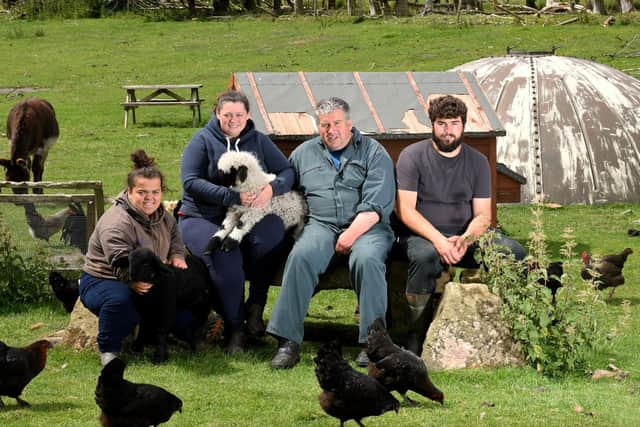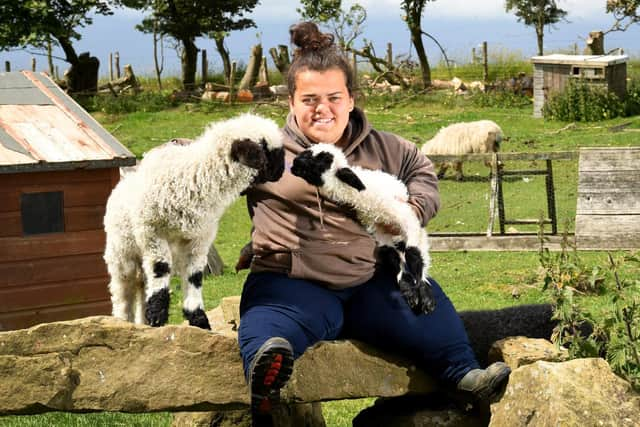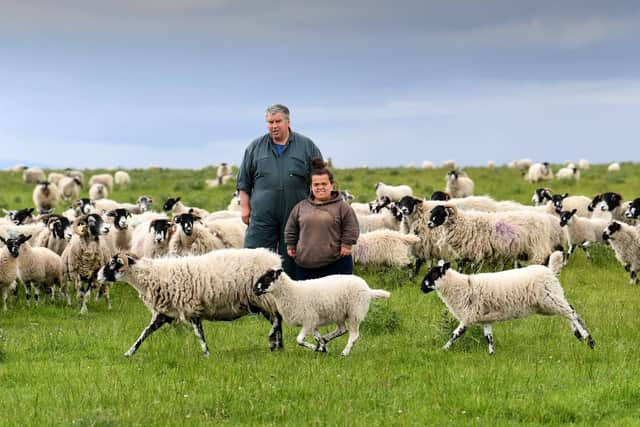Farm of the Week: Record milk prices in the North York Moors but £14,000 spent on red diesel in six months
Trevor Hodgson has always changed with the times since moving to Marfit Head Farm, Saltersgate near the Hole of Horcum in 1985, where he runs a herd of 420 dairy cows and a flock of 400 breeding ewes.
Trevor said his father had predicted that dairy farmers would eventually receive a price that would be more in line with inflation.
Advertisement
Hide AdAdvertisement
Hide Ad“In 2000 we were getting 27 pence per litre (ppl) for our milk and in 2020 we were getting 27ppl. Exactly the same. My dad, Terry, who was a dairy farmer all his life and passed away in 2013, said in his latter years ‘I don’t know when it’ll happen lad, but at some point you’ll see milk catch up’, and now it’s moving.


“In all my time of dairy farming I’ve only ever seen it moving up when it has been by a penny per litre or less, now we’ve seen an upward movement of 3 or 4 pence in a month for several months. It’s about time, but it also comes at a time when our costs have rocketed.
“Our milk goes to Yew Tree Dairies in Skelmersdale and we’re currently getting 43-44ppl. There is talk of it going over 46ppl, but our working costs, with the way they have spiralled means that we now need 52-54ppl.
“Our fuel costs alone are enough to make you worry. In the entire year of last year I spent £21,000 on red diesel. This year, until June, I’ve already spent over £14,000.


Advertisement
Hide AdAdvertisement
Hide Ad“Feed costs this year will be three times what we have been used to. We make our own silage and wholecrop and try to grow as much as we can for feed but we’re having to go elsewhere for other feed now. That’s because the by-products of brewers grains and distilled grains that we used to feed the cows are now attracting a better price to put through burners to generate power for factories.”
Trevor started out farming at Fairhead Farm in Grosmont with his father and brother David at what was the original family farm that his great-grandfather Joe had purchased in 1912. Trevor said that his father had jokingly said that he had bought Marfit Head Farm so that he and David would be okay later on in life.
“We were two brothers on the same farm and David and I got on but dad said that he’d bought Marfit Head saying ‘I’ve got them far enough apart, I think 10 miles will be enough’.”
Marfit Head ran to 210 acres when it was purchased. It is now 240 acres and Trevor and his wife Angela also own another 100 acres at Great Habton and rent another 500 acres next to Marfit Head.


Advertisement
Hide AdAdvertisement
Hide AdTrevor has never been afraid to change the way he farms. He said that when he first came to the farm and for the first decade and a half it was very different to today.
“We ran a sheep and beef unit and reared heifer replacements for the dairy herd back at Fairhead, but in 1998 we looked at the job and decided we had to do something different to make the farm viable.
“We went all dairy in 2000, which meant we were milking cows at both farms. Dad and David had 180 cows and we set off with 60. The sheep and beef went.”
A decade later in 2010 and having grown his own herd to 240 cows Trevor said he took on David’s cows taking his herd to 420.
Advertisement
Hide AdAdvertisement
Hide Ad“David had struggled getting farm staff and winter 2010 was a bad one. He was having to clear his main road and the salt heaps had run out.
“Our three kids were all growing and we had to think about what we were going to do, plus I’d bred some of the cows that had been at Fairhead so I knew what I was getting.
“We now grow about 80 acres of arable crops each year, split down to 20 acres of spring barley, 30 each of oats and spring beans. We move that block around each year and then the land is straight back to grass and red clover for many years. We are freshening up the fields that have had years of slurry and cows in them. We’re getting rid of that compaction and the weeds.”
Another twist to the Hodgson dairying operation came in 2016 when Trevor was left high and dry by a dairy buyer.
Advertisement
Hide AdAdvertisement
Hide Ad“Cows still produce milk every day even if the person who was meant to pick it up doesn’t. We lost a lot of money very quickly that year and had to pour 240,000 litres of milk in the slurry lagoon.
“Then we found Yew Tree Dairies. Without them we would have been finished. We are now back at 420 milkers with 160 followers.”
Trevor said his cows are a hybrid of three breeds.
“Since 2003 when I picked up on incorporating Norwegian Red cows the herd is now a mix of Holstein Friesian-cross-Jersey-cross-Norwegian Red. The Reds were that something further that I felt we needed. The cows average around 6,000 litres per lactation and we usually get around six to seven lactations from them. Our main emphasis is on getting them in-calf so that they calve from May to August. Our cows go out from March to November. Our calves that are not for replacements go to local farmers for rearing on.”
Trevor said the sheep enterprise runs to 300 Swaledales and 100 Dalesbreds.
Advertisement
Hide AdAdvertisement
Hide Ad“We have two sons and a daughter. Ben works with me with the cows and Abbie works with me with the sheep. Our other son Thomas is a mechanic and currently works as a fitter at the Boulby potash mine.
“Our sheep tidy the grass in winter and go on banksides in summer. We breed Mule and Masham gimmers that we sell at Ruswarp mart and at the Wombleton sale.
“We also have a 50-pitch camping and touring caravan site with electric hook-ups. Our visitors love it because they can watch the cows being milked. Angela runs it and we have seen a noticeable change recently with a few of the older generation having moved on and more young families now coming.”
